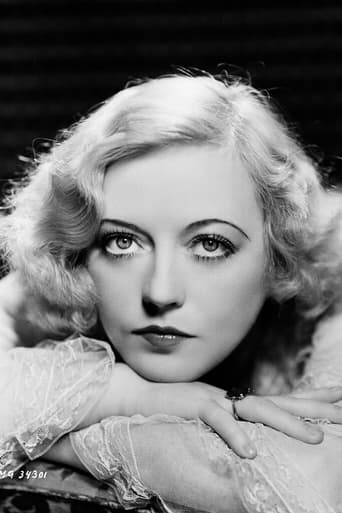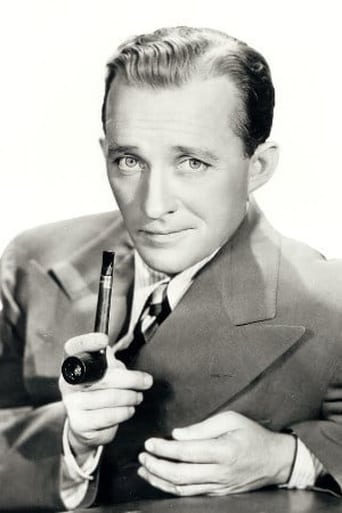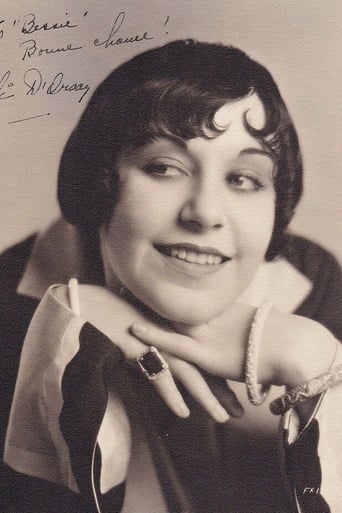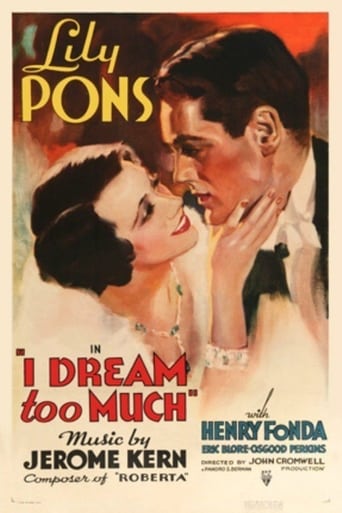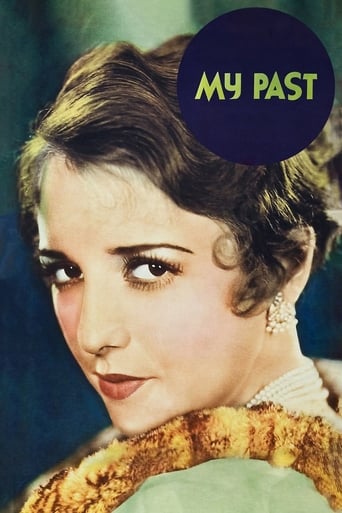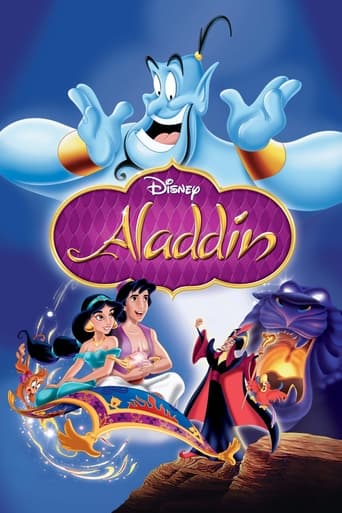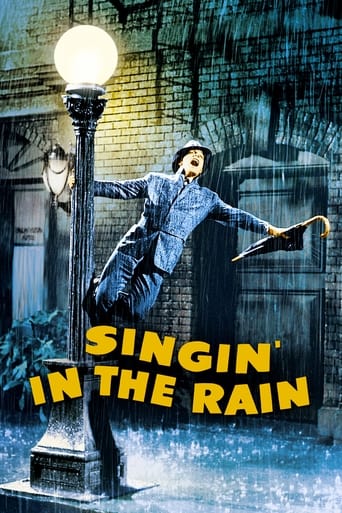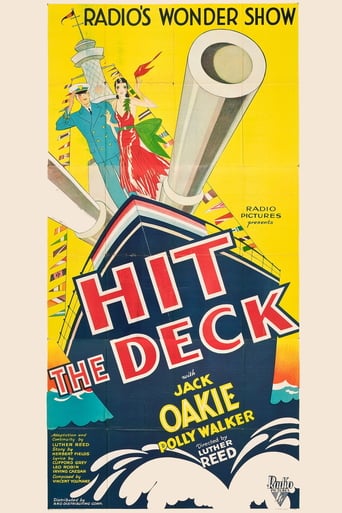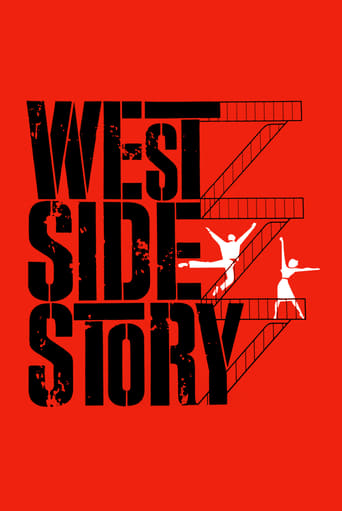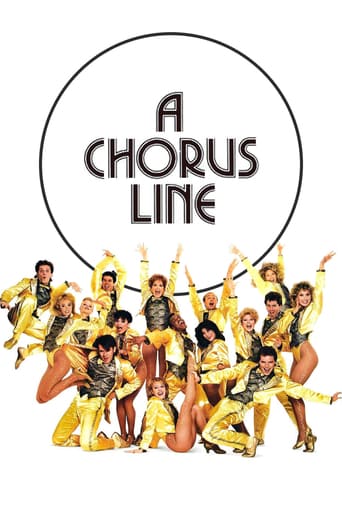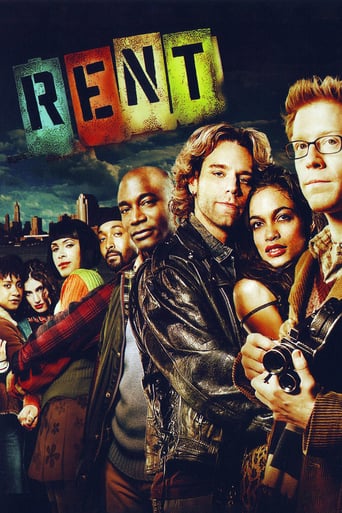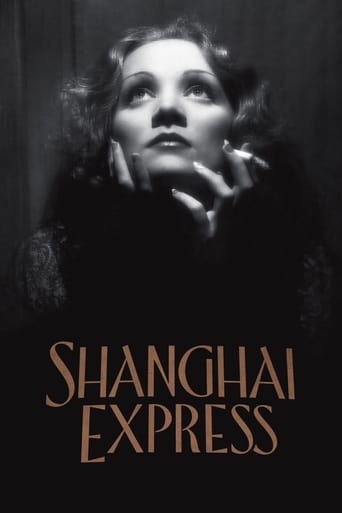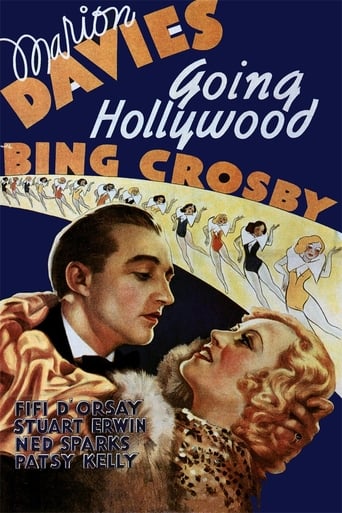
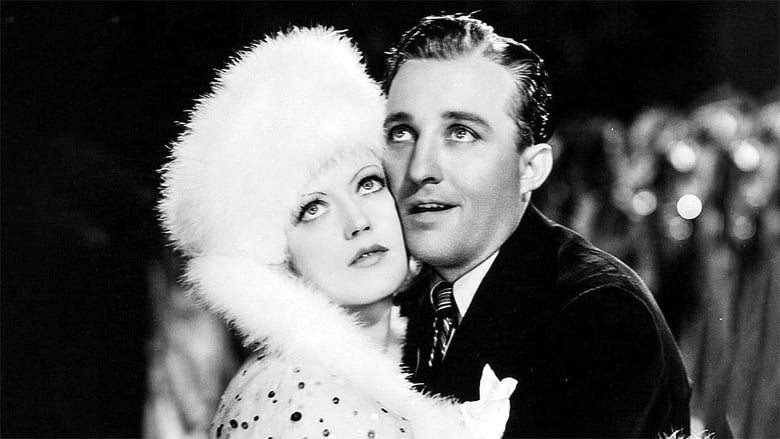
Going Hollywood (1933)
The film tells the story of Sylvia, a French teacher at an all-girl school, who wants to find love. When she hears Bill Williams on the radio, she decides to go visit and thank him. However, difficult problems lay ahead when Lili gets in the way.
Watch Trailer
Cast


Similar titles
Reviews
In the musical "Going Hollywood," Marion Davies plays a starry-eyed girls-school teacher who, after listening to Bing Crosby's crooning over the radio, follows him to Hollywood--essentially becoming his stalker. This is a silly premise, especially given that Davies was an established Hollywood star since the silent-film era, and Bing Crosby was just beginning his career there. Through much of the picture, Davies gives a stilted performance complete with dead-eye stares, which seems appropriate to the stalker role, but the rest of the film, unfortunately, plays out as a generic ingénue-turned-star romance, with neither star fitting the bill.With a threadbare plot, "Going Hollywood" spends much of its time on Crosby's singing. His belting out "Beautiful Girl" in his apartment after just awakening and while getting dressed is a nice summation of Crosby's intimate and relaxed appeal in an era when radio and the microphone were emerging technologies. Davies is mostly relegated to the sidelines during these show-stopping numbers. An extended musical dream sequence including her and Crosby on a farm and the Three Radio Rogues interlude especially go nowhere. The multiple-exposure montages, including a triangular triptych upon entering Hollywood, showing archival footage of the likes of Norma Shearer, Robert Montgomery and Marie Dresser, aren't very visually arresting, either. Worse still are the racist stereotypes of the volatile French "other" woman, who repeatedly slaps Davies for trying to steal her man and, surely in a career low, Davies disguised in blackface in one scene to continue her stalking of Crosby.Despite its title and self-referentially being a musical about making a musical, "Going Hollywood" is of the style of radio and theatre. It would've benefited from the cinematic vocabulary of the dance choreography by the likes of Busby Berkeley. The narrative, too, would've benefited from a greater self-reflexive awareness, such as is evident in an earlier Marion Davies film about film, "Show People" (1928).
Going Hollywood (1933)*** (out of 4)Light but entertaining comedy, which is pretty much a film that glamorizes stalking. Marion Davies plays Sylvia, a school teacher who quits her job after hearing Bill Williams (Bing Crosby) on the radio. She instantly falls in love with him and decides to track him down. He gives her the slip but she finds him in Hollywood where, as fate would have it, they end up being co-stars. William Randolph Hearst was the backer of this film and wanted Davies to be surrounded by as much talent as possible so he paid an outrageous fortune to get Crosby away from Paramount as well as paying to get Walsh away from Fox. The end result of all the time and trouble made for a good 80-minute comedy that has plenty of small laughs and some nice music. Davies once again comes across very charming and one can't help but fall for her here. She gets to play several parts here as she spoofs a French actress to great effect and also manages to be quite good playing a country good during a great music number set on a farm. There's also a sequence where she goes blackface and ends up making this one of the funniest scenes in the film. Crosby plays the "supporting" part but in many ways this is his film. Not only does he have that great voice going through many nice songs but he also manages to be the perfect mix for Davies comedy. The two stars have great chemistry together and really do make for a believable love story. The supporting cast includes Patsy Kelly, Ned Sparks, Stuart Erwin and Fifi D'Orsay as the mean French woman. The film is certainly a showcase for stalking but no one should take it too seriously as the film wears its heart right on its shoulder and delivers some nice entertainment. Fans of the two stars will certainly want to check the film out but so will others just wanting a good time. If you're not familiar with the stars then this would be a nice place to start out.
I have only seen Marion Davies in two films "The Bachelor Father" and "Going Hollywood". I will reserve my opinion of her talents until I see some of her silent films. In this film the standouts are the memorable songs (all of them now Bing Crosby standards), Bing's completely natural and easy going manner, Ned Sparkes (of course) and Marion's very clunky dancing.As one of the reviewers says it did seem to be a shorter film than intended. One of my favourite Crosby songs "After Sundown" not only was not sung all the way through, it was mostly sung as a "voice over" while Bing and Marion wined and dined. "Beautiful Girls" - Bing sang as he packed to go to Hollywood - I was expecting a big production number - I was disappointed but at least they were included.Sylvia Bruce (Marion Davies) is a teacher at Briarcroft Girls Boarding School. She longs to break free of the restrictions at this very strict college - "no music is permitted". One night when listening to Bill Williams (Bing Crosby) sing "Our Big Love Scene" - "Don't waste the night in wishing" - she decides to do what the song says, follow her heart and goes to Bill to tell him what he means to her.Bill is also going to Hollywood. There is a big production number. Busby Berkeley had many imitators but no one reached his excellence. This number was filmed in a clumsy way but with great gusto.Sylvia has to get past Bill's current love Lili (Fifi D'Orsay) but manages to secure a job with her as a French speaking maid (she had been a French teacher at Briarcroft). After one fight too many she quits and quickly teams up with Jill (Patsy Kelly) and finds a job as a dancer!!!!! in Bill's new movie. The wonderful Ned Sparks is the director and the scenes between him and Fifi D'Orsay are hilarious."We'll Make Hay While the Sun Shines" is introduced as a dream that Sylvia is having. It is odd - it starts off sophisticated, then suddenly they are dressed up in Edwardian clothes. At the end they are farm hands dancing an awful dance with dancing scarecrows. (It is a beautiful song!!!)The three Radio Rogues do a radio skit - they sing songs in the style and voice of popular singers of the day. They are really good. They sing "When the Moon Comes Over the Mountain" - Kate Smith, "You Call it Madness (But I Call it Love)" - Russ Columbo, "Remember Me - Morton Downey and "My Time is Your Time" - Rudy Vallee.Lili's temperament is holding up production and she then quits. Meanwhile Sylvia entertains the crew with an imitation of Lili singing "Cinderella's Fella". Stuart Erwin plays the producer who steps in and hires Sylvia as the lead (with her wonderful dancing talent!!!) To give Miss Davies her due I think she played the role excellently. Some of the lines she had to say - I don't think she sounded like a "stalker" but in another actress's hands the character may have come across as being "kooky".Bill romances Sylvia but she thinks she hears him in Lili's apartment (Lili is only listening to a record). Lili then finds him in a bar and plies him with liquour so he will not be able to make the studio the next day. He sings "Temptation" to Lili, looking so handsome!!! It ends very quickly - all the cast is on the stage to film "Our Big Love Scene" when Bill (singing of course ) comes through the door takes Sylvia in his arms and kisses her. I highly recommend this film.
This musical comedy features beautiful Marion as a bored French teacher who runs off to Hollywood. Seems like a standard 30s musical. But wait. The narrative structure of this film is more complex than it at first seems. When Davies turns on the radio and gazes out at the night sky she starts to wish upon a star. Just as she says "I wish I may, I wish I might...." Bing Crosby's voice cuts across the moment as he begins the lyric of "Our Big Love Scene": "Don't waste the night in wishing..." as though in answer to Davies' wish upon a star. She sits up, startled, and packs her bags. So sets off not to go to Hollywood, but to find Crosby, who plays a famous radio singer about to embark by train to Hollywood to star in a picture. Crosby is also involved with the picture's French star, played by Fifi D'Orsay. As Crosby is packing up to go, and after a live broadcast of his singing "Beautiful Girl" to Sterling Holloway, Davies finds him. He brushes her off as just another fan and heads to the Grand Central Station, where he sings "Going Hollywood." On the train, who should show up but Davies. In today's context, Davies is certainly a crazed fan stalking her idol, but in 1933 her actions were (in the context of this film) acceptable. D'Orsay catches the two together (Davies is correcting Crosby's French pronunciation) and immediately suspects them of being up to something. D'Orsay is on the rampage because her maid has quit. Of course Davies becomes her maid, having taught French and all. The second time D'Orsay catches them together, she slaps Davies. She quits her job. Next we find Davies in Hollywood at "Central Casting," asking to see Crosby. She's turned away and meets Patsy Kelly, a film extra. They hit it off right away, and Kelly invites Davies to share her digs. The director walks by and hires them as extras in the film starring Crosby and D'Orsay.At Kelly's bungalow, Davies takes a nap and has a bizarre dream about herself and Crosby starring in a surreal production number called "We'll Make Hay While the Sun Shines." While Davies dreams, we are shown a huge close up of her face, which is occasionally superimposed over the dream-scene action so that we don't forget it's all a dream. The scene opens with Crosby and Davies in a cozy cottage. Crosby starts the song, and the couple is strolling through a field of giant, swaying daisies and then sitting in a carriage where Davies joins Crosby in a brief duet. They come upon a farm scene of dancing scarecrows . Suddenly Davies emerges from the dancers and takes center stage in a dance number. But Crosby and Davies are still sitting in the carriage. Davies points to herself dancing and asks Crosby, "me?" He nods and soon he also is in the dance number. A windstorm suddenly comes up and everyone is drenched by the downpour. Crosby and Davies run back to the cozy cottage where they sit by the fire, wrapped in blankets, while Crosby finishes the song. On the movie set, Davies once again finds Crosby. He's in between scenes when Davies approaches. She's in blackface and dressed like Aunt Jemima. He doesn't seem to notice that she is not really black. D'Orsay catches them again and slaps Davies for a second time.Next we're on location and D'Orsay is about to sing her big number, "Have You Heard." The number has a Cinderella theme with the blonde-wigged D'Orsay as the Prince. As she launches into the song, Sparks stops her and tells he she's doing it all wrong because she's doing it as a kooch dance. She throws a fit and storms off the set. Back in her trailer, Crosby tries to comfort her. Meanwhile, back on the set, the Radio Rogues do a series of impressions of current radio stars who include Kate Smith, Morton Downey, and Crosby's singing rival of the dayRuss Columbo. Davies is then coaxed into doing an impression (Davies was famous for her ability to mimic, and does so in several of her films). Of course she launches into an impression of D'Orsay singing "Have You Heard." D'Orsay hears this and marches out to catch Davies in mid-dance and hauls off and slaps her for a third time. This time Davies strikes back and delivers D'Orsay a black eye. D'Orsay quits and Davies is hired to star in the film! There is an abbreviated scene, with Davies and Crosby dating, with Crosby singing the wonderful "After Sundown." Later, Davies attempts to deliver some flowers to Crosby, but standing in the hallway outside his door she hears D'Orsay talking to Crosby.She lures Crosby to a Mexican bar and plies him with drinks, knowing he will be fired from the picture for being absent for days. Davies tracks him down yet again and tries to get him back but he's drunk and can't think straight. This sets up the film's best number and another dream sequence. Crosby sings "Temptation" while sitting at the bar and drinking what looks like absinthe. As he sings we see huge close-ups of D'Orsay (to match the close-ups of Davies in the previous dream sequence) and cutaway shots of a dance floor crowded with same-sex couples. In the bar itself, no one is dancing. As Crosby approaches the last notes of the song, he lifts his glass and drains the last drops. It's an amazing sequence.The scene shifts back to the film set where, after seeing a dance montage to "Have You Heard," Davies is about to film an elaborate production number. As she is about to begin the scene with Crosby's replacement, he can be heard reprising "Our Big Love Scene," and the lovers meet. End of film.


